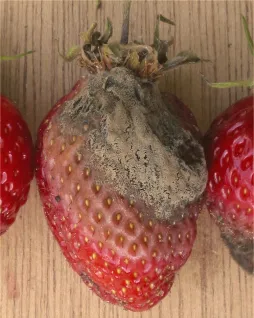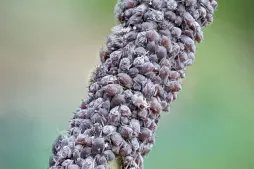Rhododendron yakushimanum, a rhododendron from Japan
Famous for its onsens, macaques and landscapes that inspired the sets of Princess Mononoke and Nausicaä, the Japanese island of Yakushima is also home to Rhododendron yakushimanum. This hardy, floriferous variety has given rise to dozens of hybrids with delicate flowers.
How to recognize Rhododendron yakushimanum?
Rhododendron yakushimanum is an evergreen shrub. It grows to no more than two meters in all directions and has a compact habit.
Like florist's Azalea or japanese Azalea, Rhododendron yakushimanum has a short, highly branched trunk.
The narrow, lanceolate leaves are covered with brown down. Over time, the hairs on the upper surface disappear, revealing a dark green blade. The underside, on the other hand, retains its hairiness and takes on a tawny color.
Rhododendron yakushimanum blooms for a month, from early May to late June. Flowers appear in groups of six to twelve at the tips of branches. Pale pink in the typical species, they can be white or more pronounced pink in horticultural varieties.
Melliferous flowers attract bees and hummingbirds. But only they can enjoy them! All parts of the plant are toxic if ingested. They cause serious digestive disorders. Animals (dogs, cats, rabbits, etc.) are particularly sensitive.
Our maintenance tips
Rhododendron yakushimanum thrive in acid soil. If your garden soil is alkaline, plant in pots.
Watering
Water your Rhododendron yakushimanum when the soil surface is at least three centimetres dry.
Use non-calcareous water at room temperature, such as rainwater.
After 20 minutes, empty the planter or saucer. Stagnant water can rot the roots.
Repotting
When the roots escape from the pot, it's time to repot your Rhododendron yakushimanum.
Get a new pot with a slightly larger diameter and depth than the previous one. Pour a bed of clay balls or gravel into the bottom for drainage.
Rhododendron yakushimanum plants like light, rich, well-drained soil. Fill your pot with a mixture of one third potting soil for green plants, one third sand and one third heather soil.
Remove your Rhododendron yakushimanum from its old container. If the roots have begun to turn in circles, untie them. Place your subject in the center of the pot and fill in with substrate. Tamp and water for the first time.
Fertilization
You can stimulate the growth of your plant during its growth phase, in spring and summer, with fertilizer.
Apply a fertilizer for flowering or acid-loving plants. Follow the manufacturer's instructions to avoid damaging the foliage.
Prune
To encourage the growth of your Rhododendron yakushimanum, prune regularly.
You don't need to prune your Rhododendron yakushimanum. Just remove wilted flowers and dead leaves.
You can also cut away dead wood with clean, sharp pruning shears.
Plantation
Once the last spring frosts have passed, you can plant.
Choose a location in partial shade, under a tree for example.
Soak the rootball of your Rhododendron yakushimanum, preferably in rainwater. Meanwhile, dig a hole twice as wide and as deep as the rootball.
Plant your Rhododendron yakushimanum and backfill with a mixture of garden soil, heather and compost. If your soil is heavy, add gravel or sand to improve drainage.
Tamp and water to encourage rooting. Mulch with organic matter, such as pine bark, to keep the soil cool.
Cutting
Select a branch that has not yet flowered and whose tip is still flexible.
Take a section about ten centimetres long. Cut with clean, sharp pruning shears below a node.
Dress your cutting. Remove the leaves on the lower half of the shoot. You can reduce the size of the others by half.
Fill a pierced pot with a mixture of universal potting soil(1/3), sand(1/3) and heather (1/3). You can also use potting soil for seedlings and cuttings mixed with perlite. Form a pre-hole and plant your cutting in the center. Pack lightly.
Cutting is done in a smothered fashion. Place your Rhododendron yakushimanum in a mini greenhouse or translucent crate. You can also cover it with a transparent plastic bag.
Your cutting needs humidity to develop. Fog the leaves and potting soil whenthey are dry, to maintain a high level of humidity. But beware of rot! You need to aerate for a few minutes every day to avoid rot.
Diseases / Threats
Information
| Family | Ericaceae - Ericaceae |
| Type | Rhododendron - Rhododendron |
| Species | Rhododendron yakushimanum - Rhododendron yakushimanum |
| Lifecycle | Perennial |
| Foliage | Evergreen |
| Exposure | |
| Substrats | |
| Planting methods |
Open ground In pots In tubs |
| Categories | |
| Tags |
Beginner Flowery Rustic Toxic |
| Origin |
Southeast Asia |
| Hardiness (USDA) | 7b |
| Leaf color |
|
| Flower colors |
|
Discover plants from the same family
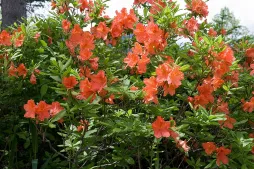
Japanese azalea
Discover
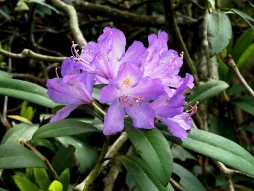
Rhododendron ponticum
Discover
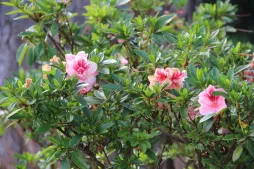
Florist's azalea
Discover

Common heather
Discover












